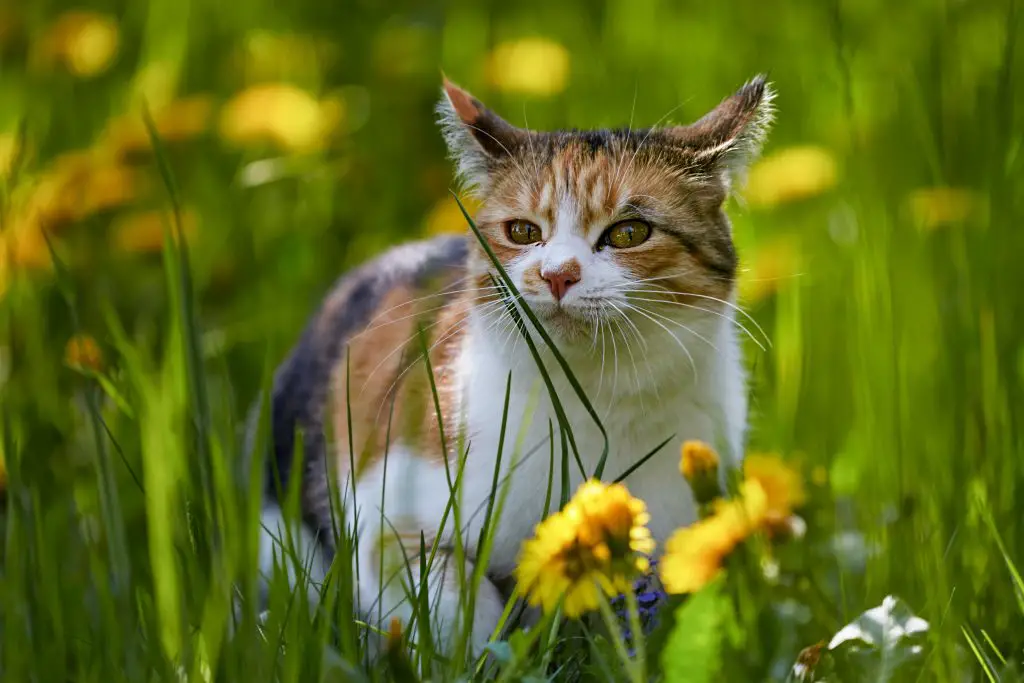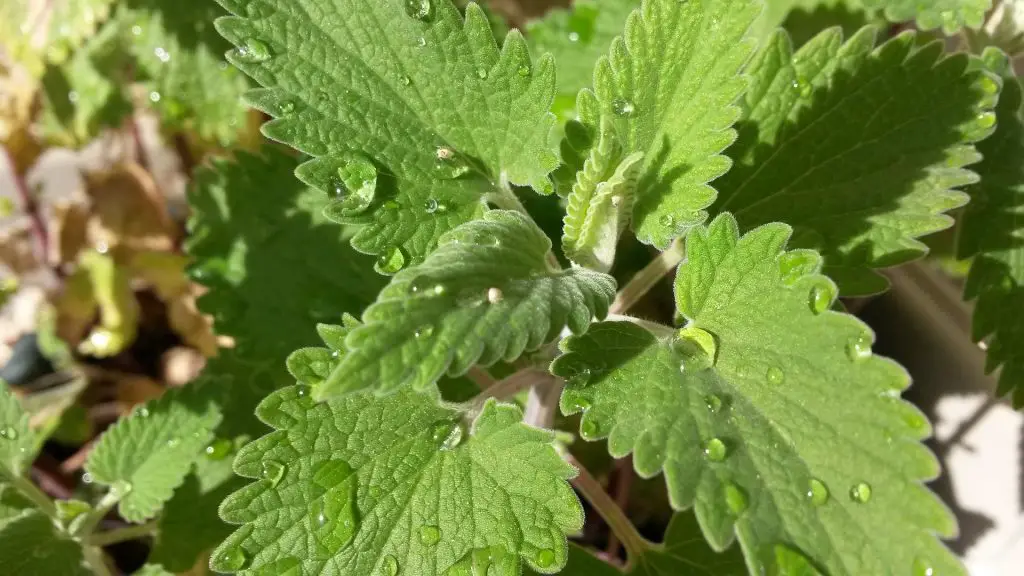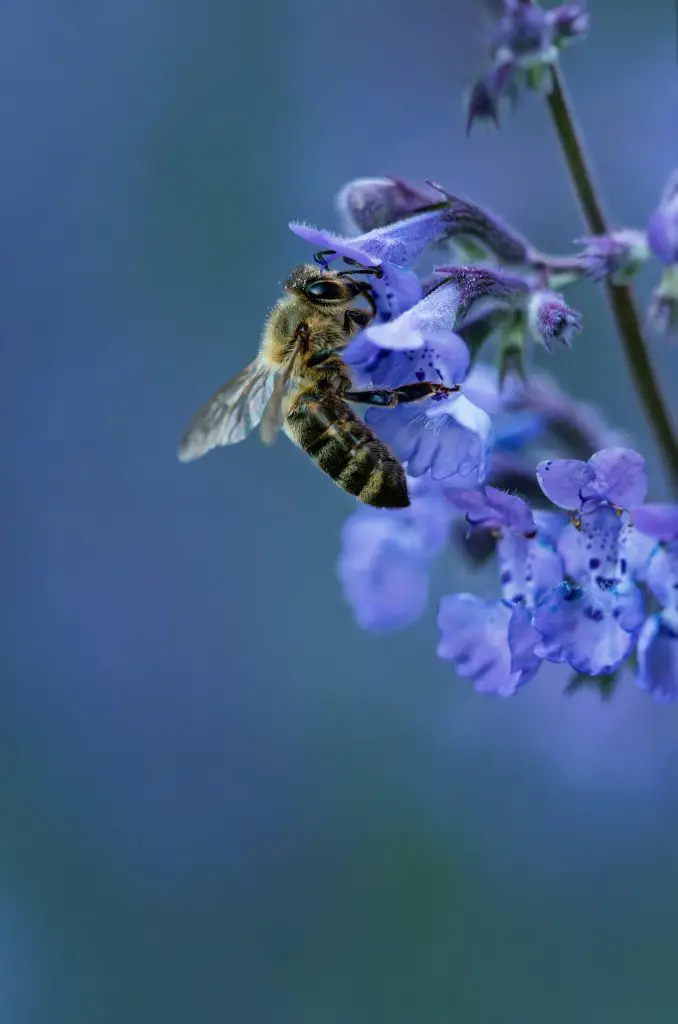Is Catnip And Catmint The Same? For those gardeners that are also cat owners, you may be wondering what the difference is between Catnip and Catmint is. Do cats really like either of these plants and is it worth planting either plant in your garden?
Catmint and Catnip are two separate species from the same genus of Nepeta which is in the mint family. Being from the same genus means the plants are closely related to each other and have many common physical traits such as similar leaves and flower shapes though the color is different (discussed later in the article). However, the most distinctive difference is the presence of nepetalactone in Catnip which attracts cats. As Catmint does not contain this compound it does not have any effect on them.
The cats affected by Nepetalactone can exhibit a range of behaviors which include rolling around on the ground and becoming playful, chewing and eating the leaves, and nuzzling up against the plant. The impact of this chemical will only last around 15 minutes or so before the cats become immune to its effects.

The response of the cats is believed to be related to the chemical triggering the release of beta-endorphins, a natural opioid chemical produced which induces a high. The effects are temporary because the receptors in the body that detect the chemical become blocked by the chemical itself preventing the further release of endorphins.
This immunity typically lasts for around an hour before the cats are again susceptible to its effects. However, it is important to note that not all cats are affected, kittens are immune to its effects along with 3 out of 10 adult cats which possess a genetic variation that prevents the animals from being affected according to New Scientist.
The Physical Similarities And Differences Between Catmint and Catnip
As mentioned above the Catnip and Catmint come from the same genus and possess several physical characteristics that are similar. However, there is significantly more variation among Catmint varieties as the term is used to describe a range of species within the genus including Nepeta faassenii, Nepeta govaniana, Nepeta grandiflora, and Nepeta nervosa where as Catnip describes only the single species, Nepeta cataria.
The most obvious similarity is the shape of the leaves, both catmints, and catnip which both have jagged edges and an undulating surface that is reminiscent of common mint. The most common varieties tend to have grey-greenish foliage however there are a few varieties that don’t have the grey characteristic, see the image below.

In terms of flowers, Catnip usually has white flowers, whereas the most popular forms of Catmint have a purple-colored flower. However, there are catmints that also have white, pink, and even yellow varieties, though the yellow form is not common.
Despite the difference in colors, there is a common structure within the flowers. The plants all produce small to medium spires that produce flowers along the length of the spire. The flowers for both species tend to appear around late spring and last for a couple of months.
In terms of plant height, the most common Catnip varieties are 2 to 3 ft tall, whereas the Catmint varieties vary in height from 1 to 4 ft depending upon the specific variety. To compare common varieties see the table below, there is also additional detail including photos of the individual varieties available at www.gardenia.net.
| Plant | Hardiness | Sun | Flower Color | Height | Spread |
| Nepeta Cataria (Catnip) | 3 – 10 | Full Sun/Part Shade | White | 2 – 3 ft | 1 – 2 ft |
| Nepeta ‘Cat’s Pajamas’ (Catmint) | 3 – 10 | Full Sun | Purple | 2 – 3 ft | 1 – 2 ft |
| Nepeta ‘Six Giant Hills’ (Catmint) | 3 – 10 | Full Sun/Part Shade | Purple | 2 – 3 ft | 1 – 2 ft |
| Nepeta faassenil ‘Purrsian Blue’ (Catmint) | 3 – 10 | Full Sun | Purple | 1 – 2 ft | 1 – 2 ft |
| Nepeta grandiflora ‘Bramdean’ (Catmint) | 5 – 10 | Full Sun/Part Shade | Purple | 2 – 3 ft | 1 – 2 ft |
| Nepeta grandiflora ‘Dawn to Dust’ (Catmint) | 4 – 10 | Full Sun/Part Shade | White/Red | 2 – 3 ft | 1 – 2 ft |
| Nepeta nervosa ‘Blue Moon’ (Catmint) | 5 – 10 | Full Sun/Part Shade | Purple | 1 – 2 ft | 1 – 2 ft |
| Nepeta nervosa ‘Pink Cat’ (Catmint) | 4 – 10 | Full Sun | Pink | 1 ft | 1 ft |
| Nepeta govaniana (Catmint) | 4 – 10 | Full Sun/Part Shade | Yellow | 3 – 4 ft | 1 – 2 ft |
| Nepeta racemosa ‘Blue Wonder’ (Catmint) | 3 – 10 | Full Sun/Part Shade | Purple | 1 – 2 ft | 1 – 2 ft |
| Nepeta racemosa ‘Walker’s Low’ (Catmint) | 4 – 10 | Full Sun/Part Shade | Purple | 2 – 3 ft | 2 – 3 ft |
| Nepeta sibirica ‘Souvenir d’Andre Chaudron’ (Catmint) | 3 – 10 | Full Sun/Part Shade | Purple | 1 – 2 ft | 1 – 2 ft |
| Nepeta x faassenil ‘Cats Meow’ (Catmint) | 3 – 10 | Full Sun | Purple | 1 – 2 ft | 2 – 3 ft |
| Nepeta x faassenil ‘Junior Walker’ (Catmint) | 4 – 10 | Full Sun/Part Shade | Purple | 1 – 2 ft | 2 – 3 ft |
| Nepeta x psfike ‘Little Trudy’ (Catmint) | 4 – 10 | Full Sun/Part Shade | Purple | 1 ft | 1 – 2 ft |
About Catnip
As mentioned as Catnip (Nepeta cataria) is a member of the Nepeta genus which is in the Lamiaceae family (mint). The precise origins of the plant are not known though it grows naturally in several parts of both Europe and Asia. However, it wasn’t until the 1800s that the plant was brought to the Americas. The plant proved to be popular with the Native American population who began incorporating the plant into their foods and medicines.
As mentioned above this plant contains the chemical Nepetalactone, which apart from its effects on cats has some other beneficial effects which include acting as a repellant for mosquitoes and cockroaches even when the leaves are dried. Additionally, the plant is sometimes used in herbal teas and is said to be useful in relieving stress, menstrual cramps, flu symptoms, and digestive symptoms.

However, it is important to note that the plant, like all the members of the Nepeta family, spreads relatively easily through self-seeding. The plant has the potential to become a weed if left to its own devices.
Catnips as you might expect grow relatively easily from seed with most gardeners preferring to sow the seeds in spring as this allows the plant to become established through the growing season before the cold weather arrives. The seed can be sown directly into the garden however I prefer to sow them in seed trays as it provides greater control over the growing conditions.
Start by filling the trays with seed raising mix and sow the seed at a depth of 0.5 inches (1 cm). Water the seed tray gently and keep the soil moist through the germination period. The seedlings will appear in 7 to 14 days and will usually require around 6 weeks before the plants are large enough to plant them out into the garden. At this stage, the plants will have typically reached a height of 4 inches or so.
When planting the seedlings outside in the garden they should be placed in a relatively sunny location, though the Catnip will tolerate shady locations. In these locations, the plant may not grow as quickly or produce as many flowers. In terms of soil conditions the plant will tolerate a wide range of different soils but like most plants will benefit from having access to plenty of nutrients.
The plants need to be spaced approximately 1 ft (30 cm) apart to allow room for them to spread out. To minimize the degree of competition with weeds and moisture loss it is advisable to add a layer of mulch around the surface of the plants that is approximately 2 to 4 inches thick, then water in well.
In terms of ongoing maintenance, the plant requires very little effort to keep it looking good and it will tolerate long periods of complete neglect. Once the plant becomes established it is extremely drought tolerant and generally copes well with high temperatures.
Additionally, it has a relatively thick canopy of foliage which ensures that once established it will suppress any weeds, which makes it ideally suitable for use in a cottage or Mediterranean garden. It generally does not have any serious pest problems and deer don’t like to eat it.

It has a long flowering period throughout the summer after which it is advisable to deadhead the plant and give it a light trim for purely aesthetic reasons.
In terms of propagation, new plants can be created either by seed, softwood cutting in summer, or semi-ripe cuttings in Autumn. However, it is often not necessary to propagate the plant as it readily self-seeds over time.
About Catmint
Like Catnip, Catmint is a member of the Nepeta genus, however, as mentioned above Catmint is used to describe a range of species and is a far more general term. However, due to the close relations, all of these species have many of the characteristics mentioned in the “About Catnip”.
The origin of the plant is not known other than it grows naturally in Europe and Asia. The plant leaves can be used in herbal teas like the catmint, but the plant does not possess the insect repellent qualities of catnip due to the lack of Nepetalactone in the leaves.
It is also a drought-tolerant plant and requires very little maintenance like the catnip. It also competes well with weeds completely blanketing any areas it grows in. This means it is an excellent choice of plant in low maintenance garden.
Where Catmint has a significant advantage over Catnip is that there is a much wider range of plant forms which allows it to be at both the front and back of the border, either by selecting a low growing or taller form. I personally grow the plant in my garden and would highly recommend it for use in any ornamental garden.
